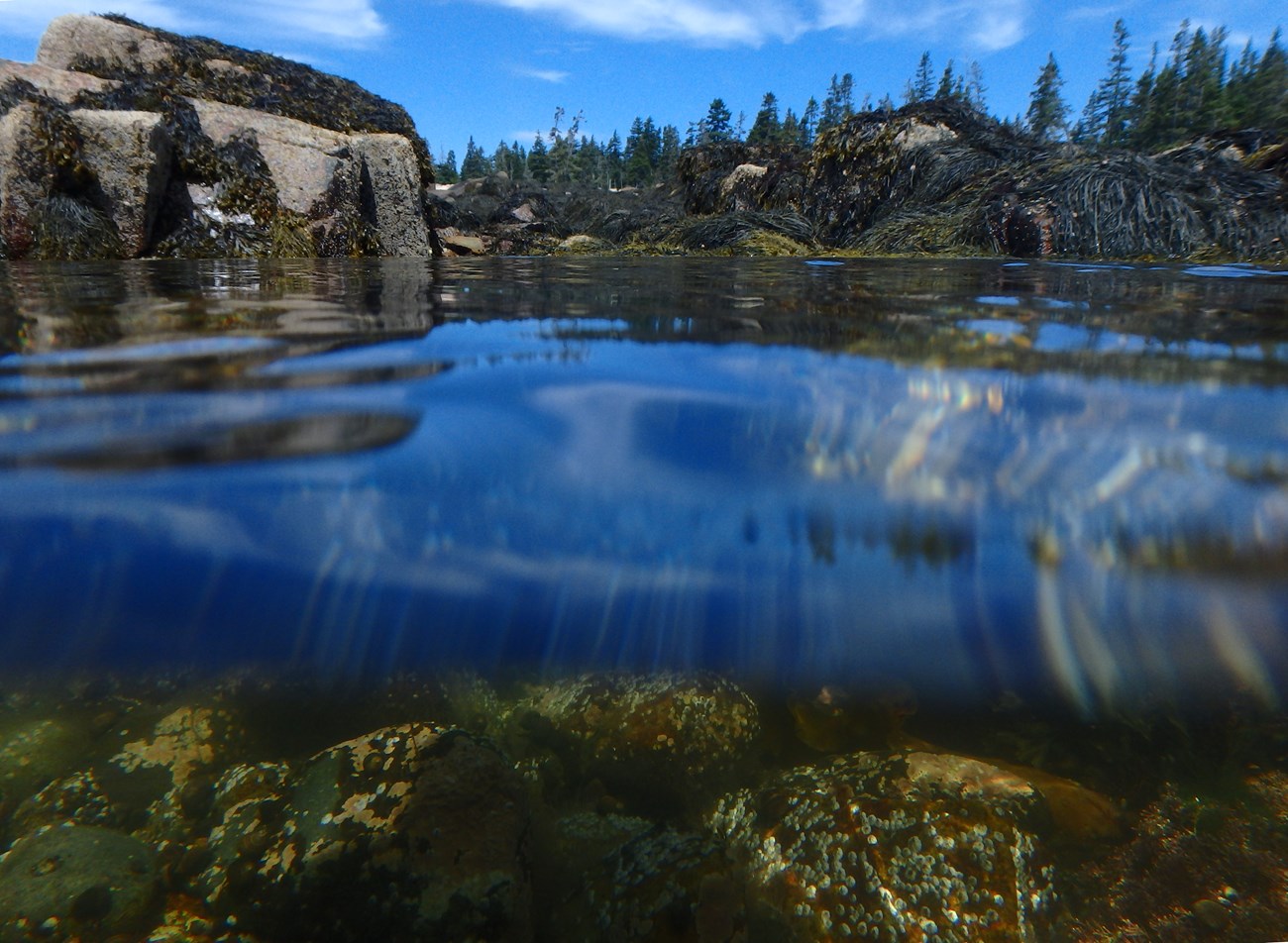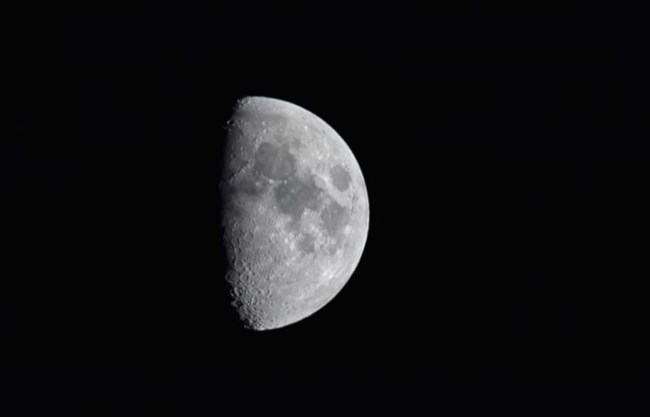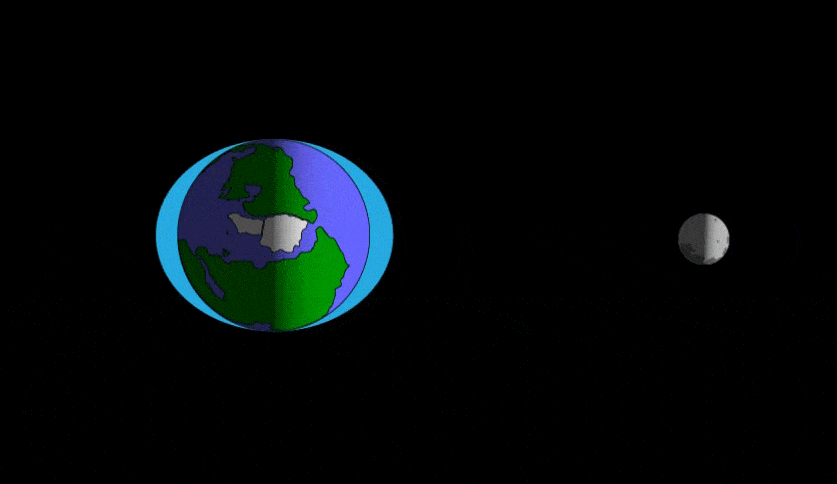
NPS Photo/Crystal Lewis An 8 to 12 foot rise and fall of the seas happens twice a day every day at Acadia National Park. This natural phenomenon is known as the tides. At high tide, coastal features are covered with sea water and access to certain islands disappears. At low tide, the seas recede revealing coastal features and ocean life that lives in this intertidal zone. 
How the Moon's Gravity Impacts the EarthIt might sound like "lunar-sea", but the Moon’s gravitational force on the Earth is so powerful that it causes 8-12 foot tidal fluctuations of here and upwards of 20 foot tides further north along the eastern seaboard. Even though the Moon has 80 times less mass than the Earth, the its gravitational force changes the shape of our planet as it orbits the earth. This force is stronger on the side of Earth closer to the Moon and weaker on the side of the Earth farthest away from the Moon. 
How Tidal Forces Change the Earth’s ShapeAs the Earth rotates on its axis and revolves around the Sun, the side of the Earth that faces the Moon bulges outward. It's almost as if the Earth were reaching towards the Moon. The bulge doesn’t just appear on one side, but on both, turning our world into a giant egg shape, or oval. We call this phenomenon tidal force. What About The Sun?Though the Sun is about 400 times larger than the Moon, it exerts much less tidal force on the Earth than the Moon. Why? The answer has to do with distance. The Sun is about 400 times farther away from the Earth than the Moon, and this great distance weakens the Sun’s tidal force. If the Moon were to disappear tomorrow, the Sun would still cause tides on Earth. However, the tides would only be about 1/2 of the size they are today. Life Among The TidesLife on the coast relies on the rhythmic flow of salt water as it surges out and drifts in. People have relied on the food sources revealed by the tides for thousands of years as they work the waters at the lands edge. Exploring Acadia's TidepoolsExploring these protected resources of Acadia provides an opportunity to peek through a window to the sea. A variety of marine animals and colorful algae species become exposed on the rocky shores of Acadia at low tide. Exploring this area at low tide is known as 'tidepooling.' Tidepooling is a fun and fascinating activity if done safely and in a way that leaves tidepools unharmed for future generations. To ensure the health of our resources and the safety of visitors, please visit our Tidepooling page to find out more about tidepooling in Acadia and how you can protect these fragile places. More About Acadia's Tides |
Last updated: April 12, 2022
